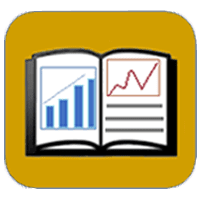Research and Publications
View article.
Approximately 75% of models tested had acceptable, excellent, or outstanding predictive ability. The models that performed poorly were primarily models predicting stem mortality of angiosperms or tree mortality of thin-barked conifers. This suggests that different approaches—such as different model forms, better estimates of bark thickness, and additional predictors—may be warranted for these taxa. Future data collection and research should target the geographical and taxonomic data gaps and poorly performing models identified in this study. Our evaluation of post-fire tree mortality models is the most comprehensive effort to date and allows users to have a clear understanding of the expected accuracy in predicting tree death from fire for 44 species.
View article.
This study’s objective was to determine whether remnant/unburned sagebrush patches contribute to sagebrush recovery in surrounding burned areas surrounding them.
Key Findings:
While conventional wisdom is that sagebrush seeds remain close to the mother plant, we found that a measurable percentage of seeds travel up to tens of meters. Remnant patches of sagebrush after fire could contribute to natural regeneration in surrounding landscapes. However, seed arrival was highly variable between sites and work remains to be done to predict where natural regeneration will be sufficient to rehabilitate sagebrush steppe after wildfire.
View report.
This progress report highlights some of the many contributions and impacts of the JFSP over the past 2 years including:
- Continued scientific output from wildland fire research through manuscripts, management briefs, decision-support tools, and syntheses.
- Efficient delivery of wildland fire science to practitioners through the nationwide Fire Science Exchange Network.
- Incorporation of wildland fire science to improve policy, restoration success, public and firefighter health and safety, and fuels management, among others.
This study modelled 20 forage species that are suitable for mule deer and Rocky Mountain elk. Climatic, topographic, soil, vegetation, and disturbance variables were attributed to approximately 44.3 million habitat patches generated using multi-scale object-oriented image analysis. Lasso logistic regression was implemented to produce predictive SDMs. The study evaluated if the inclusion of distal environmental variables (i.e., indirect effects) improved model performance beyond the inclusion of proximal variables (i.e., direct physiological effect) only. Results showed that all models provided higher predictive accuracy than chance, with an average AUC across the 20 forage species of 0.84 for distal and proximal variables and 0.81 for proximal variables only. This indicated that the addition of distal variables improved model performance. The study validated the models using two independent datasets from two regions of Idaho and found that predicted forage species occurrence was on average within 10% of observed occurrence at both sites.
View our 10-year highlights in this Story Map.
For a decade, the Great Basin Fire Science Exchange (GBFSE) has supported fire, fuels, and restoration research and outreach in the region. We accelerate awareness, adoption, and implementation of fire science by providing a forum for managers, scientists, policy makers, and the public to interact and share. As one of 15 regional fire science exchanges sponsored by the Joint Fire Science Program, we organize and disseminate current research, make connections, and support long-term relationships between practitioners, managers, and researchers to improve the health of Great Basin ecosystems. From climate to communication, we’ve tackled the toughest issues facing managers and stakeholders in a stressed and changing environment. On our 10-year anniversary, we review our accomplishments and look to future challenges.
Weed-Suppressive Bacteria, or WSB, are bacteria strains of the soil bacterium Pseudomonas flourescens (D7, ACK55, and MB906) developed and marketed as a natural way to control exotic grasses, such as cheatgrass. In the late 1900s and early 2000s, scientists began experiments that looked for biological ways to selectively eliminate or inhibit growth of exotic annual grasses.
In 2009, new guidance for wildland fire management in the United States expanded the range of strategic options for managers working to reduce the threat of high-severity wildland fire, improve forest health and respond to a changing climate. Markedly, the new guidance provided greater flexibility to manage wildland fires to meet multiple resource objectives. We use Incident Status Summary reports to understand how wildland fire management strategies have differed across the western US in recent years and how management has changed since the 2009 Guidance for Implementation of Federal Wildland Fire Management Policy. When controlling for confounding variation, we found the 2009 Policy Guidance along with other concurrent advances in fire management motivated an estimated 27 to 73% increase in the number of fires managed with expanded strategic options, with only limited evidence of an increase in size or annual area burned. Fire weather captured a manager’s intent and allocation of fire management resources relative to burning conditions, where a manager’s desire and ability to suppress is either complemented by fire weather, at odds with fire weather, or put aside due to other priorities. We highlight opportunities to expand the use of strategic options in fire-adapted forests to improve fuel heterogeneity.
This open access book synthesizes leading-edge science and management information about forest and rangeland soils of the United States. It offers ways to better understand changing conditions and their impacts on soils, and explores directions that positively affect the future of forest and rangeland soil health. This book outlines soil processes and identifies the research needed to manage forest and rangeland soils in the United States. Chapters give an overview of the state of forest and rangeland soils research in the Nation, including multi-decadal programs (chapter 1), then summarizes various human-caused and natural impacts and their effects on soil carbon, hydrology, biogeochemistry, and biological diversity (chapters 2-5). Other chapters look at the effects of changing conditions on forest soils in wetland and urban settings (chapters 6-7). Impacts include: climate change, severe wildfires, invasive species, pests and diseases, pollution, and land use change. Chapter 8 considers approaches to maintaining or regaining forest and rangeland soil health in the face of these varied impacts. Mapping, monitoring, and data sharing are discussed in chapter 9 as ways to leverage scientific and human resources to address soil health at scales from the landscape to the individual parcel (monitoring networks, data sharing Web sites, and educational soils-centered programs are tabulated in appendix B). Chapter 10 highlights opportunities for deepening our understanding of soils and for sustaining long-term ecosystem health and appendix C summarizes research needs. Nine regional summaries (appendix A) offer a more detailed look at forest and rangeland soils in the United States and its Affiliates.
This paper describes Fires of Change, a collaborative art exhibit designed to communicate about the shifting fire regimes of the United States Southwest through the lens of multimedia art. The Southwest Fire Science Consortium and Landscape Conservation Initiative, both of which are boundary organizations that facilitate collaboration among managers and scientists to develop and apply actionable science, organized Fires of Change by convening scientists, managers, and artists in the co-production of science-based artwork. Surveys were conducted with Fires of Change exhibit visitors to assess the impacts of viewing the exhibit, as well as with exhibit creators to assess the effects of participating in the project.
Potential Operational Delineations (PODs) is a spatial wildfire planning framework that brings together operational fire responses and landscape management goals from Forest Planning documents. The PODs risk-based framework helps managers weigh a portfolio of landscape values, including human assets and natural resources, current conditions, responder safety, and likely fire outcomes to identify appropriate fire management objectives. Across the country, more than 30 National Forests have begun developing and implementing this planning framework with local partners complementing the Shared Stewardship efforts.




